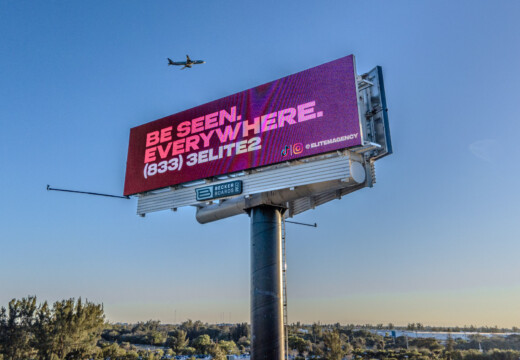Liability clauses in advertising contracts can create financial and operational challenges for small businesses. They outline who is responsible for ad content, damages caused, and risk distribution, which can lead to unexpected costs and legal risks if misunderstood.
Key challenges include:
- Financial strain: High insurance costs and liability risks.
- Limited negotiation power: Small businesses often accept rigid terms.
- Complex legal language: Difficult-to-understand jargon increases risks.
How to manage liability risks:
- Review contracts: Hire a lawyer to negotiate fair terms.
- Get insurance: Cover risks with general liability or media liability policies.
- Choose simple advertising platforms: Use tools like Blip for clear terms and reduced risks.
- Regular updates: Frequently assess contracts and liability terms.
Good, Bad, and Ugly Examples of Limitations of Liability
Key Problems for Small Business Advertisers
Small business advertisers face several hurdles, particularly in managing costs, negotiating fair terms, and understanding legal jargon.
Cost and Risk Distribution
Advertising contracts often place an unfair financial burden on small businesses. These agreements may require them to cover more than their fair share of risks, forcing them to pull funds away from essential advertising efforts. This creates a tough situation, especially for businesses with limited budgets.
Limited Negotiation Power
Small businesses usually lack the leverage to negotiate favorable terms. They’re often stuck agreeing to rigid liability clauses with little room for adjustments. These inflexible terms can put extra financial pressure on their already tight operations.
Complex Legal Language
Legal jargon in advertising contracts adds another layer of difficulty. Terms like indemnification, content compliance, and claims procedures are often confusing for business owners without legal training. Misunderstanding these terms can lead to agreements that carry serious financial risks if disputes arise.
sbb-itb-2e2e93f
Ways to Reduce Liability Risk
Small businesses can manage advertising risks by combining legal advice, insurance coverage, and platform-specific strategies.
Reviewing Contracts
Hiring a lawyer to review and negotiate contracts can save you from potential liabilities. While there may be upfront costs, they often pale in comparison to the protection you’ll gain.
Key areas to address include:
- Liability caps: Ensure the limits align with your financial situation.
- Indemnification: Restrict obligations to scenarios where you’re directly involved.
- Content compliance: Confirm that standards are clear and achievable.
- Dispute resolution: Establish straightforward methods for handling conflicts.
After addressing contracts, insurance can provide an additional layer of protection.
Exploring Insurance Options
Insurance complements your legal strategy by covering risks that contracts alone can’t handle. Look into:
- General liability insurance: Covers basic advertising-related issues.
- Media liability insurance: Protects against problems with ad content.
- Errors & omissions insurance: Covers professional mistakes or oversights.
An insurance professional can help you determine the best coverage for your needs. Digital platforms can also simplify risk management.
Simplified Advertising Platforms
Modern advertising platforms offer features that reduce risk while keeping campaigns effective. For example, Blip’s digital billboard service provides a practical solution.
"It’s not a social media thing that you see on your phone. It’s not word-of-mouth. It’s big and bold and out there in public. I would say this is the first step of looking big and public"
Blip’s platform minimizes liability with:
- Short-term commitments: Avoid long-term contracts and reduce ongoing risks.
- Clear content guidelines: Simple design standards help ensure compliance.
- Transparent pricing: The pay-per-play model eliminates concerns over hidden fees.
"Billboards are one of the most impactful ways to advertise, and with Blip, you spend a fraction of what you would end up paying elsewhere"
Tips for Handling Liability Clauses
Writing Clear Terms
Well-defined liability clauses are essential for protecting small business interests. Focus on these key areas:
- Scope of liability: Clearly outline responsibilities and exclusions.
- Damage limits: Establish reasonable caps on compensation.
- Time limitations: Specify timeframes for filing claims.
Avoid vague language like "reasonable efforts." Instead, use precise terms, such as "responding within 48 hours." This level of clarity helps create agreements that align with industry expectations.
Meeting Market Standards
Industry norms provide a foundation for fair and effective liability clauses. Consider these common practices:
- Liability caps: Limit liability to the total payment received for services.
- Content verification: Use defined review processes to ensure accuracy.
- Dispute resolution: Include mediation clauses to resolve conflicts efficiently and affordably.
Blip offers a great example of simplifying liability management. Their transparent guidelines and pay-per-play model reduce the uncertainties often found in traditional advertising contracts. Regular reviews ensure their terms stay relevant and address new challenges.
Regular Contract Reviews
Frequent contract reviews are crucial for staying ahead of potential risks. Schedule updates to liability terms as follows:
1. Quarterly assessments
Review contracts every three months to ensure they reflect current business operations and risk exposure.
2. Annual legal updates
Work with legal counsel once a year to incorporate new laws and industry changes.
3. Campaign-specific modifications
Tailor liability terms for each campaign based on factors like:
- Campaign size and duration
- Characteristics of the target audience
- Types of media being used
- Geographic coverage
These steps help maintain effective and up-to-date liability protections.
Conclusion: Managing Risk While Growing
Main Takeaways
Protecting your small business while pursuing growth requires careful attention to liability management. Here are some key points to keep in mind:
- Clear contracts are crucial for safeguarding your business interests.
- Regular updates to liability terms ensure they remain relevant and effective.
- Insurance coverage helps distribute risk and provides an extra layer of security.
- Straightforward advertising options can limit exposure to complicated liability concerns.
"It’s not a social media thing that you see on your phone. It’s not word-of-mouth. It’s big and bold and out there in public. I would say this is the first step of looking big and public"
These points can serve as a practical guide for immediate improvements.
Action Items
Turn these insights into actionable steps for your business:
-
Review Contracts Regularly
Go over your contracts every quarter, paying close attention to liability clauses and any potential risks. -
Update Insurance Coverage
Schedule a meeting with your insurance provider to confirm your coverage adequately protects against advertising-related risks. -
Choose Practical Advertising Solutions
Opt for platforms with transparent and flexible terms. For example, Blip’s pay-per-play model reduces financial risk while boosting advertising reach."Billboards are one of the most impactful ways to advertise, and with Blip, you spend a fraction of what you would end up paying elsewhere"
-
Keep Detailed Records
Maintain organized documentation of contracts, insurance policies, campaign data, and communications to streamline risk management.


